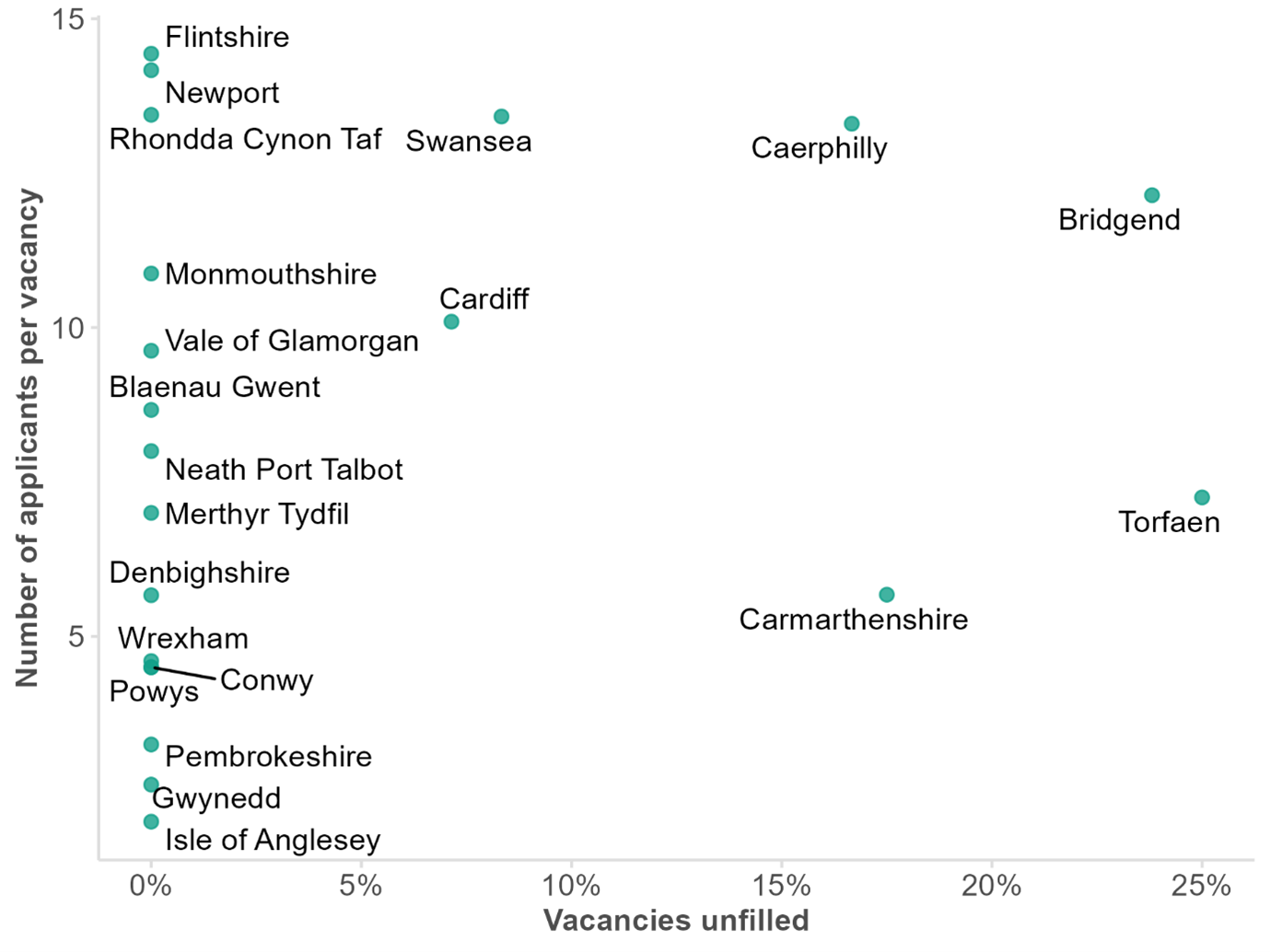The National institute of Economic and Social Research and the Education Policy Institute have recently published research on the recruitment and retention of senior school leaders, commissioned by the National Academy for Educational Leadership Wales. Below, we summarise some of the EPI team’s headline findings on the recruitment difficulties facing Welsh schools.
Recruiting school leaders in Wales, and across the UK, can be difficult. As the job of senior leadership becomes less attractive, there is a shrinking pipeline of middle leaders progressing to senior leadership and headship, which risks creating a shortage of senior leaders. Fewer middle leaders are aspiring to become senior leaders, and more teachers are leaving the profession following the Covid-19 pandemic. In one study of headteachers in Wales, over 60 per cent reported stress levels that are associated with a negative effect on one’s health.
Wales has particular challenges both because schools can teach in either Welsh or English, and because of the geography of the country. Finding Welsh speakers to lead schools further narrows the pool of potential applicants. There are also very rural regions in Wales that can struggle to attract applicants, simply because there are fewer people living nearby.
Is there a shortage of senior leaders?
Measuring shortages of senior leaders, and particularly headteachers, is not straightforward. A shortage could mean several things: it could mean there are fewer applicants than there are vacancies. Alternatively, a shortage could occur if the applicants are not suitable for the role, perhaps because they don’t have the right skills. However, candidates may still be appointed into the role if the school has no good alternative.
To understand the nature of shortages for advertised leadership posts at schools in Wales we measured recruitment on two dimensions:
- Quantity: the average number of applicants per vacancy quantifies the size of the applicant pool.
- Suitability: the percentage of vacancies that remained unfilled after being advertised quantifies the suitability of the applicants. If the applicants are weaker, it is less likely the advertised posts will be filled.
These two measures are likely to be related because having many applicants increases the probability of finding a good leader within the pool; however, they still appear to be measuring slightly different dimensions of recruitment.
Shortages in senior leadership recruitment over the past 15 years
The chart below shows these two measures, calculated for all middle and secondary schools in Wales for each of the past 15 years. Across those years, there were only four in which there were a good number of suitable candidates: 2011, 2012, 2018 and 2019. The chart illustrates the importance of attracting a sizeable number of applicants for filling posts. However, it also shows that there are years (eg 2014) where, despite a considerable number of candidates, schools struggled to fill some of their vacancies. That suggests the pool of applicants might not have been as strong in those years as schools would like.
In the last 15 years, there were only four years in which there were a good number of acceptable candidates

Note: Middle and secondary schools.
Examining the latest data for each local authority (LA), some – like Caerphilly and Bridgend – have a large proportion of unfilled vacancies despite having a reasonable number of applicants, which may indicate that they are struggling to attract the quality of the applicants they would like. On the other hand, vacancies in the Isle of Anglesey, Pembrokeshire, and Gwynedd were successfully filled despite having very few applicants. In that case, it is possible that either the few applicants were excellent or that the LA has lower expectations than some others.
Some local authorities struggled to find the right candidate despite the high number of applicants

Note: Data extracted from SWAC. Data for 2020/21 and 2021/22 was available for the following LAs: Bridgend, Caerphilly, Carmarthenshire, Flintshire, Powys, Newport, Gwynedd, Powys, Rhondda Cynon Taf, Swansea, Monmouthshire, and Vale of Glamorgan. The results shown in this figure are an average of the two years.
The relationship with rurality is also apparent in this chart. LAs with the fewest applicants per vacancy – Isle of Anglesey, Gwynedd, Denbighshire, Powys, Conwy, Pembrokeshire, and Carmarthenshire – all have a population density below the Welsh average.
Schools in Wales can teach in Welsh, English, or bilingually. Recruiting excellent leaders who are also comfortable working in Welsh is challenging because there are simply fewer leaders to choose from. A study by the Welsh government in 2009 found that one of the most significant challenges was the appointment of headteachers to Welsh-medium schools. Furthermore, the NFER recently published a report showing that there has been a growing challenge to employ enough teachers in Welsh medium schools and in more disadvantaged areas.
Our analysis contrasts slightly with these findings because, as the chart below shows, filling senior leadership posts in Welsh-medium schools has rarely been a problem, save for a few unusual years. The red cluster in the lower left of the plot indicates that the Welsh-medium vacancies were easily filled despite the small number of applicants. Again, it is impossible to say why that might be but, in general, it is likely that either the applicants are excellent or that the standards for appointment are lower than in other schools.
Welsh-medium schools had fewer applicants but managed to fill most vacancies

Note: Data extracted from PLASC. Middle and secondary schools
Our results confirm the struggle of getting a large pool of candidates for Welsh-medium posts. This was particularly difficult for Welsh-medium primary schools, which also found it hard to find an adequate candidate. In contrast, Welsh-medium secondary schools filled all their posts with a small pool of candidates. Despite non-Welsh medium vacancies receiving a higher number of candidates than Welsh-medium vacancies, some posts were left vacant. In sum, our data suggests the two factors associated with difficulty in recruitment are primary phase and Welsh-medium.

